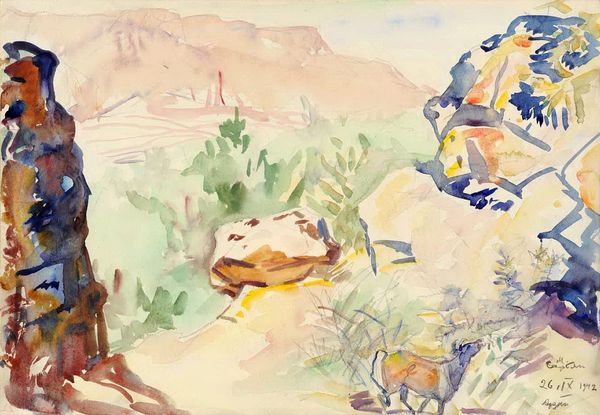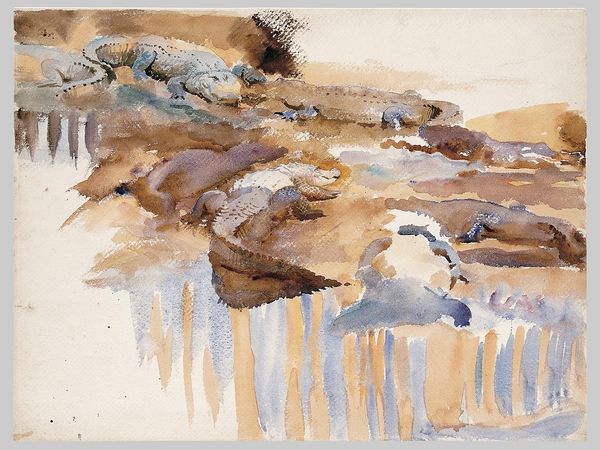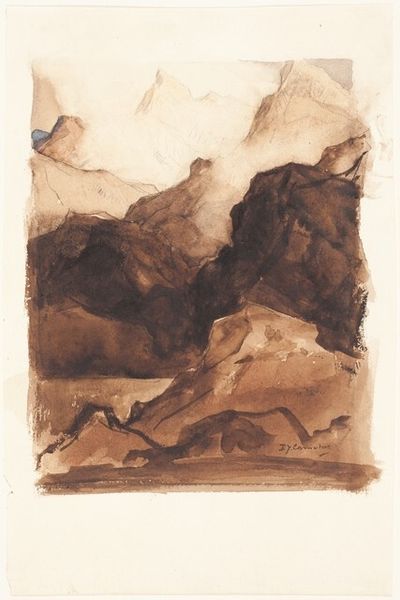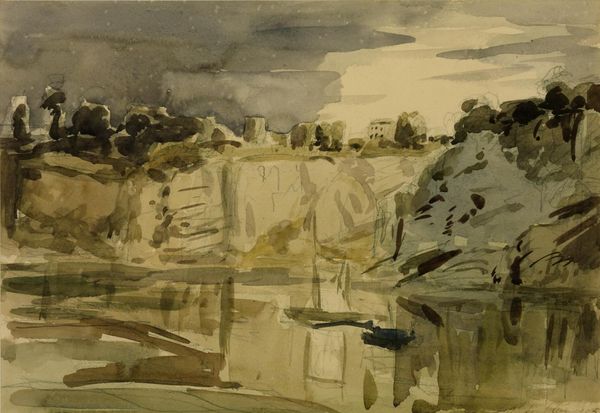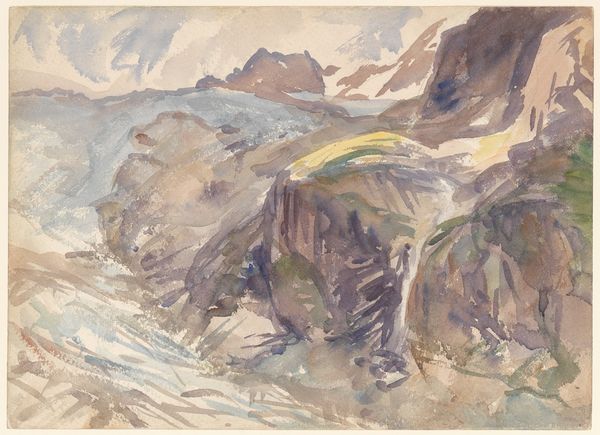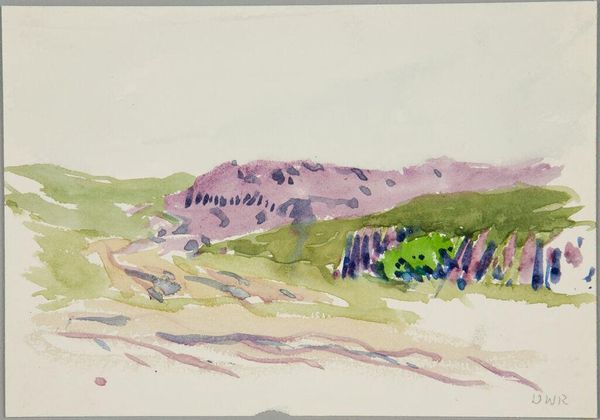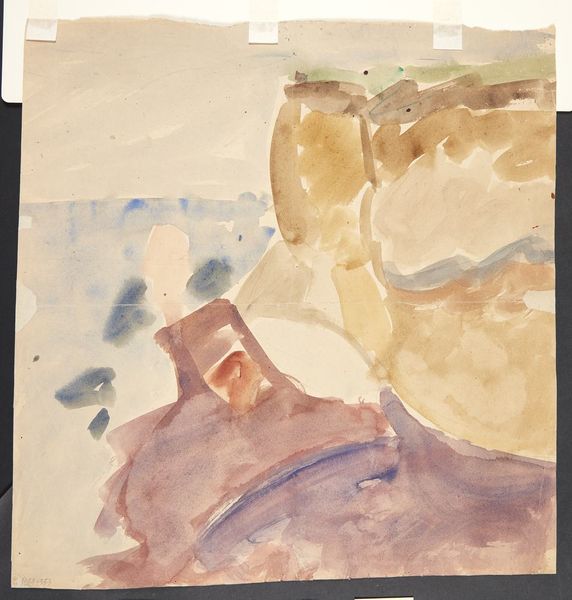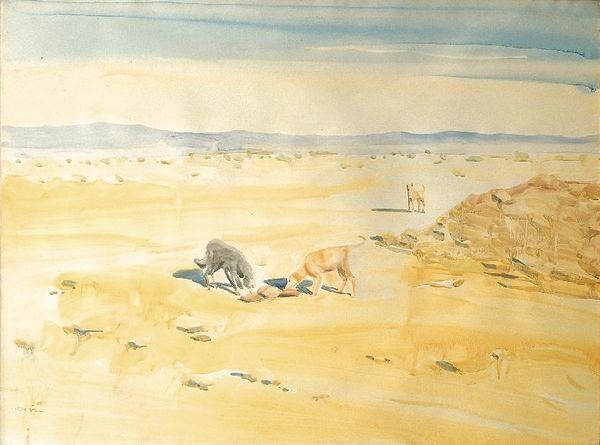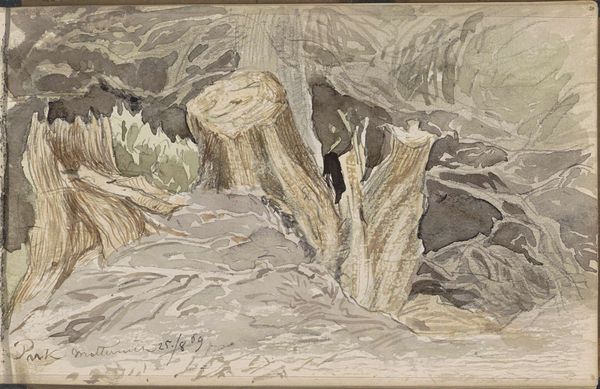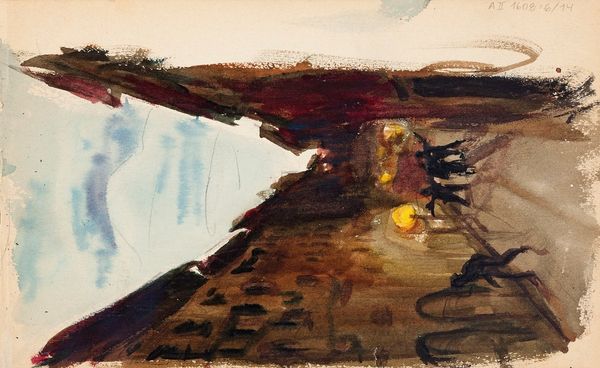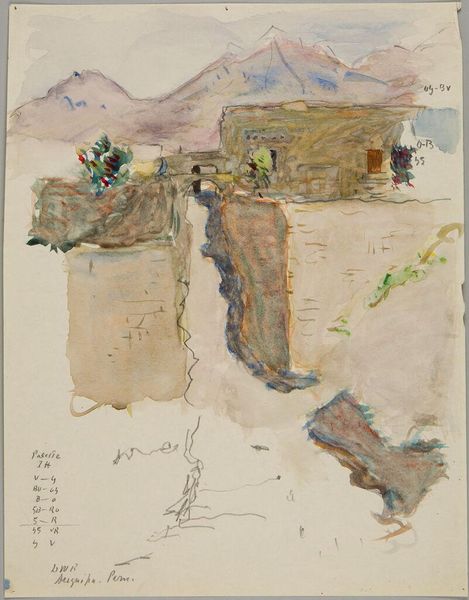
painting, watercolor
#
painting
#
landscape
#
oil painting
#
watercolor
#
watercolour illustration
Copyright: Public Domain: Artvee
Curator: It's quite sobering. There's a muted palette, the ochre and drab hues feel incredibly bleak. Editor: That's a fair response. John Singer Sargent created this watercolor entitled "Dugout" around 1918. Consider that timeframe, and it's not just a landscape. Curator: Of course, World War I. It speaks volumes about the psychology of survival and shelter; those makeshift dwellings feel both fragile and essential. It captures the human need for safety amidst chaos. Editor: Exactly. These images offered glimpses into lives often unseen, influencing public opinion. The symbolism, however understated, of digging in, resonates even today with socio-political undertones of resilience and resistance. What is being hidden or protected? Who builds the dugout and what do they expect from it? Curator: Look closely—Sargent juxtaposes those heavy browns of earth and survival with wisps of blue sky. Is it hope? Escape? Or the reminder of a world beyond the trenches? The symbols offer a complexity which, despite being subtly introduced through color, offer the painting such gravity. Editor: And while watercolor can be seen as "less serious" or immediate, the immediacy is powerful. It allowed Sargent to quickly document scenes and relay their impact without heavy staging. How do the formal qualities impact popular memory, for example? Sargent used his name to validate these "snapshots." It certainly raises interesting questions about authority and visual truth. Curator: The very idea of truth in a time of war. I agree. The way Sargent used accessible media invites viewers in to reflect and process experiences. There are archetypal meanings here—of safety, the desire to protect, of the psychological and emotional toll war takes. The painting reveals the paradox: strength in fragility and despair juxtaposed against nature's unyielding rhythms. Editor: Ultimately, "Dugout," speaks to how conflict shapes individual experience and collective identity, demonstrating the critical role artists play in portraying and contesting these very memories. Curator: Very true, a chilling reminder and a beautiful consideration on Sargent's role as a cultural communicator.
Comments
No comments
Be the first to comment and join the conversation on the ultimate creative platform.
